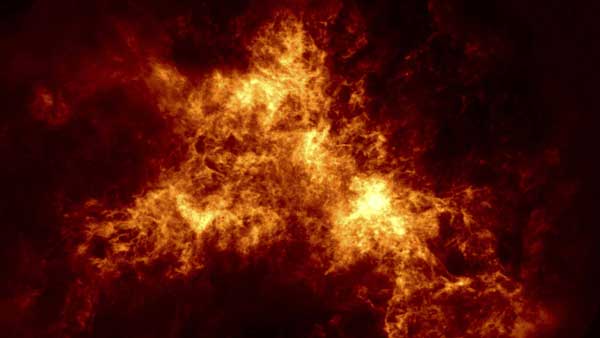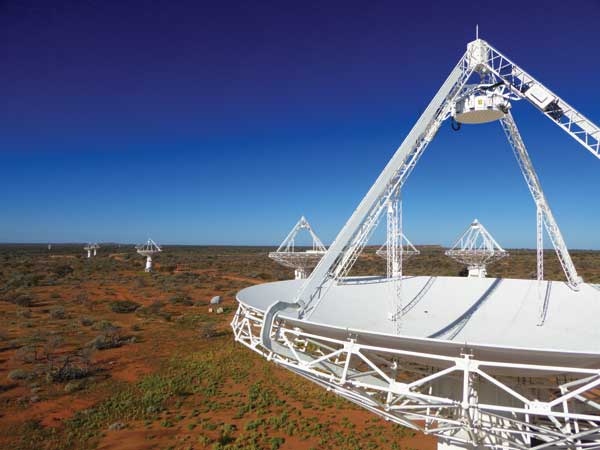Astronomers have obtained the most detailed radio image of hydrogen gas in a neighboring galaxy, revealing its structures with more precision than ever before.
Researchers have used the Australian Square Kilometre Array Pathfinder (ASKAP) to snap the most detailed radio-wave view to date of one of the Milky Way’s largest satellites, the Small Magellanic Cloud.
This dwarf galaxy, about 100 times smaller than the Milky Way and 200,000 light years from Earth, appears like a faint cloud in the Southern Hemisphere sky. Now, ASKAP shows the same view at radio wavelengths, a fiery amalgam of bright- and dark-red clumps, resembling a particularly unsettling sunset in Mordor. The different hues of red reveal the amount of hydrogen gas in each area, as measured by hydrogen’s emission at 21 centimeters (1420 MHz).

ANU & CSIRO
Hydrogen atoms are the building blocks that make up every galaxy — where hydrogen gas accumulates, new stars are born. But once they form, powerful stellar winds blast hydrogen atoms away, a process dramatically accelerated when the stars die in supernova explosions. So hydrogen gas can reveal more about a galaxy’s extended structures than stars or dust. Indeed, the image shows huge gaseous filaments stretching away from the dwarf’s edges, maybe being swept away as the galaxy moves through the Milky Way’s halo.
This new image is part of ASKAP’s early science, created using just 16 of the facility’s 36 identical 12-meter antennas. ASKAP is located in the remote Murchison Radio-astronomy Observatory in Western Australia, where it has much-needed radio silence. Although the telescope is not fully completed yet, all of the critical systems are operational. Project managers expect to complete construction in 2018.
Yet even the partial array results in an image three times sharper than the previous best image of hydrogen gas in the Small Magellanic Cloud, obtained with the Australia Telescope Compact Array. The ASKAP image also has higher sensitivity, showing weak features that were previously unseen, and covers a larger area, allowing researchers to study the galaxy’s interaction with its surroundings.

CSIRO
Designed as a survey telescope, ASKAP is fast — it only needed 33 hours of observing time over three nights to capture the new galactic portrait. The previous best image of our galactic neighbor required eight nights, during which astronomers had to aim the telescope toward hundreds of separate points across the galaxy to obtain the whole picture.
“The area shown in the image is about 100 times the area on the sky of the full Moon,” says Naomi McClure-Griffiths (Australian National University). “With ASKAP, we get that in a single frame.” In comparison, the Jansky Very Large Array in New Mexico would need to observe more than 500 separate frames to cover the same area.
ASKAP is poised to carry out cutting-edge research, with nine big survey projects in already the works. It’s also a testbed for technology that will be implemented in the Square Kilometre Array (SKA). This $1.8 billion international endeavor aims to build the world’s largest radio telescope by installing more than 2,000 antennas with a combined collection surface of more than one square kilometer, split between two locations in Australia and South Africa.
When finally completed — no earlier than 2020 — astronomers expect SKA to tackle important science goals. SKA will help astronomers find out how the first stars and black holes form, understand galaxy evolution, and search for organic molecules in space. SKA will even listen for artificial extraterrestrial radio signals, if there are any.
 0
0









Comments
You must be logged in to post a comment.